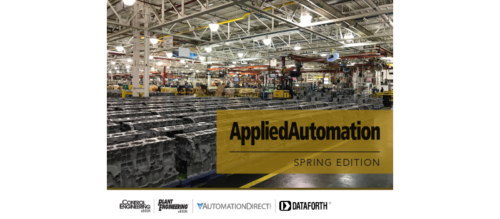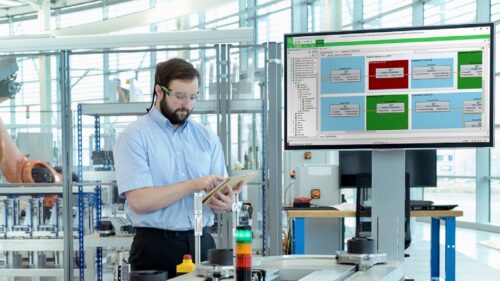How warehouse automation business models are diverging
System integrators are looking to expand their service offering through additional network consulting and supply chain software applications, which means the automation hardware itself is becoming a smaller and smaller subset of the solution offering and is changing how companies approach the issue.
According to research interviews with both end-users and system integrators, warehouse automation equipment is becoming more and more standardized and modular and the margins on equipment sales is eroding over time. As a result, system integrators and automation original equipment manufacturers (OEMs) are looking for new revenue-generating opportunities. This typically involves either moving up the value chain through increased consulting and software capabilities or providing additional services on the hardware installed, both of which have significantly higher margins than equipment sales.
Service and maintenance contracts and service-level agreements (SLAs) have worked for a number of years. Given the growing cost and complexity of warehouse automation solutions, end-users are often willing to pay a premium for a service and maintenance contract, or better yet, an SLA which guarantees a certain level of up-time or throughput. In 2020, warehouse automation system integrators generated $4.3 billion in service and maintenance revenues which is forecast to increase to $8.7m in 2025 as the installed base grows. However, with almost all warehouse automation vendors offering some form of service and maintenance contract and SLAs, are looking to further differentiate themselves.
For many system integrators, this differentiation comes in the form of offering additional consulting services. Fortna, for example, offers supply chain network consulting using proprietary software to advise on the optimal network design for efficient distribution and fulfillment. This has the added benefit of starting the customer journey well before the automation solution design phase begins which has typically been the point at which end-users first engage with system integrators.
However, the vast majority of system integrators see increased software capabilities as the gold standard when it comes to differentiation based on our research interviews. Not only does this improve the solution offering, but it also makes it harder for customers to switch between system integrators and the further up-stream the software can be integrated, the harder it becomes to switch vendors.
While most system integrators offer some form of WES and WMS capabilities, several of the large integrators such as Dematic and Knapp now offer software packages which extend beyond the four walls, rooting themselves deeper into their customers’ supply chain operations. In 2019, Dematic acquired DAI which has given it supply chain execution capabilities such as order and demand management as well as retail management for in-store picking. Knapp now boasts a suite of software solutions designed to improve the efficiencies of its customers supply chains through increased supply chain visibility and network planning. Furthermore, Siemens Logistics recently announced its Network Booster software which interconnects data from multiple sorting centres to provide network monitoring and optimization.
It’s not just the middle mile being targeted by system integrators. Several automation vendors now offer a suite of downstream fulfillment software applications. Takeoff Technologies, for example, offers last-mile route planning, product assortment and a front-end user interface. Furthermore, Ocado’s Smart Platform offers a complete end-to-end fulfillment platform from the automation to the fulfillment software and the front-end user interface. The remit of system integrators is expanding beyond material flow throughout the warehouse and is slowly becoming material flow throughout the entire supply chain.
A trend towards hardware agnosticism?
As system integrators look to expand their service offering through additional network consulting and a growing suite of supply chain software applications, the automation hardware itself is becoming a smaller and smaller subset of the solution offering. Coupled with the fact that several end-users have expressed concerns during research interviews over hardware lock-ins as system integrators gain more influence over supply chain operations, traditional integrators may become partially or fully hardware agnostic and outsource the hardware equipment which contrasts with the current model whereby most system integrators manufacturer and integrate their own equipment. This trend will be accelerated by the fact that warehouse automation equipment is becoming more and more standardized.
We’re already seeing this to a certain extent. AutoStore, for example, manufactures automated storage systems and operates on a partnership model whereby it partners with integrators which install AutoStore’s storage systems. Several other companies are following in the footsteps of AutoStore, developing innovative systems which automate a given function within a warehouse such as Exotec and Tompkins Robotics which have partnered with a number of pure-play integrators. Furthermore, several mobile robot vendors operate through partnerships. Koerber Supply Chain, for example, has formed partnerships with several different mobile robot vendors including Fetch Robotics, Geek+ and Tompkins Robotics which means it can choose the optimal mobile robot solution for its customers.
This begs the question; should system integrators continue manufacturing their own equipment? And more importantly does integrating your own equipment still give you a competitive advantage? Many would argue that customers want ‘just one ass to kick’ if something goes wrong. However, pure-play integrators which partner with several different OEMs often get around this by offering stringent SLAs which places the responsibility of maintaining up-time and throughput on the integrator rather than the OEMs. Furthermore, the commoditization of hardware equipment is eroding margins and is reducing the cost saving benefits associated with being vertically integrated. The outsourcing of the manufacturing of equipment allows integrators to focus on higher value services such as consulting, supply chain execution software and fulfillment-as-a-service (FaaS) models.
A dichotomy between system integrators and OEMs
However, whilst many system integrators are looking to offer higher value services and solutions to avoid the margin erosion associated with selling commoditized equipment, we’re also seeing several automation vendors doubling down on their equipment sales strategies which is leading to a growing dichotomy between OEMs and system integrators. Interroll, for example, cites a growing trend towards the outsourcing of manufacturing as a key growth driver in its annual report (see image below). Savoye, a French system integrator and OEM announced a partnership strategy in 2015 to expand its international sales which has led to phenomenal growth; between 2018 and 2020, Savoye’s revenue increased by more than 75%.
Furthermore, It’s not just other system integrators which OEMs can sell their equipment too. We’re seeing a growing trend towards e-commerce companies such as JD.com and Amazon developing their own warehouse execution software and tendering out the automation equipment directly to OEMs which is further accelerating equipment commoditization.
For vertical markets which tend to be more tech savvy and have a high level of software capabilities in-house, such as the general merchandise segment, a large part of the market will be equipment sales directly to the end-customers. The demand for higher value supply chain execution software and network consulting will likely come from customers with less experience with e-commerce. This is particularly true for the grocery sector which is less familiar with e-commerce and has faced a significant supply chain shock from COVID-19. It is no surprise, therefore, that Ocado’s Smart Platform (OSP) has been so successful with food retailers. The graph below shows software revenues from system integrators as a percentage of total warehouse automation revenues for each vertical. As the data shows, general merchandise has the lowest share of software because of the trend towards bringing the software capabilities in-house. Conversely, grocery has the highest share of software as it relies heavily on its automation partners for software solutions.
There’s a regional element to this too. In many regions, customers favour local integrators making it difficult for western automation vendors to enter the market without partnering with a local system integrator. For this reason, Knapp – which normally focuses on selling complete solutions, supplies its equipment to South Korean logistics solution provider, Doosan.
The long-term game plan
This leaves many of the large traditional system integrators in somewhat of an identity crisis. On the one hand, they are actively looking to move up the value chain through additional consulting and software capabilities, positioning themselves as supply chain service providers. However, a large share of their revenues still comes from selling equipment to tech savvy e-commerce companies, many of which design their solutions in-house and have their own WES and WMS systems leading to lower margins. To become hardware agnostic and outsource manufacturing entirely could jeopardize these large contracts. One scenario is for these companies to separate their OEM and integration activities into separate business units.
This has the benefit of:
- Creating a coherent marketing narrative for each business
- Increase revenues through selling to other integrators and capitalizing on the trend towards hardware agnosticism
- Mediate any concerns associated with vendor lock-ins so long as the integration business units form supply partnerships with other hardware OEMs, and
- Expand to new geographies through partnership models with local system integrators.
Final thoughts
System integrators moving up the value chain and expanding beyond the four walls of the warehouse which is raising concerns with end-users over hardware lock-ins as they integrate deeper into supply chain operations. At the same time, OEMs are doubling down on equipment sales strategies by capitalizing on the trend of outsourcing manufacturing as well as the tendering out of automation equipment by large tech-savvy e-commerce retailers. These opposing trends are forming somewhat of a dichotomy in the market.
Whilst traditional automation vendors have the potential to succeed using either strategy, it will be increasingly important for them to create and define the right marketing narratives for each approach. This requires understanding the types of automation equipment being sold and competitive landscape for each vertical and region.
– This article originally appeared on Interact Analysis’ website. Interact Analysis is a CFE Media content partner.
Original content can be found at www.interactanalysis.com.
Do you have experience and expertise with the topics mentioned in this content? You should consider contributing to our CFE Media editorial team and getting the recognition you and your company deserve. Click here to start this process.






